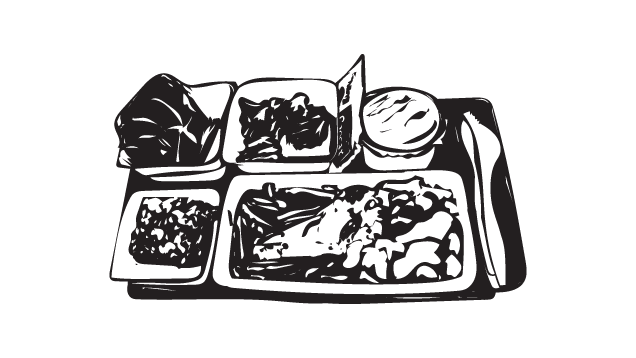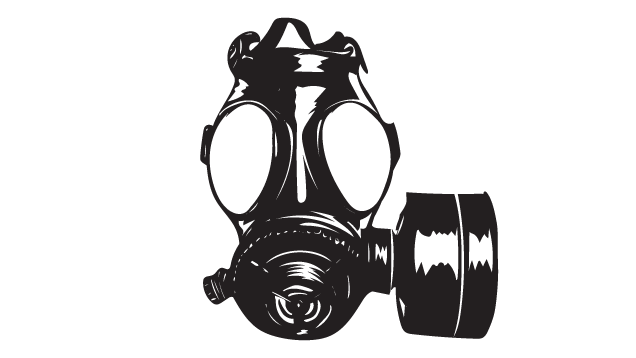You know the smell. It’s hard to describe, but the second you step on an aeroplane, a flood of familiarity flies up your nostrils. Aeroplane smell is equal parts comforting and off-putting. And it’s actually a little bit dangerous. But what is it exactly?
That unique odour inside of an aircraft is quite the cocktail of chemicals, particles, and compounds. As you probably would have assumed, it is not fresh air. Almost every single aircraft in the sky uses a blend of stale air that’s been recirculated from the cabin air and outside air that’s been sucked into the engines then pumped into the cabin.
This air is known as “bleed air” and there have been myriad class action lawsuits filed by flight crews that blame toxic chemicals from bleed air for causing various health problems, namely some serious ones that affect the brain. Those problems are broadly referred to as aerotoxic syndrome. You might’ve heard a bit about this topic recently, as a group of flight attendants are suing their airline over toxic air in the cabin.
But before we get into the scary stuff, let’s discuss the specific odours that contribute to that token aeroplane smell. Some of them are easy to guess. Others are just weird.
Coffee
Well, duh. Most flights serve coffee, and before takeoff, flight attendants make that coffee to serve to first class passengers and, later, the plebeians in coach. Since you often pass the galley, you probably sniff that brewing coffee right away when boarding a plane. Coffee tends to be a pretty stinky, lingering smell, so you’re probably whiffing it to some degree for the entire flight.
Other Beverages
Another duh. At some point in most flights, the beverage carts will fill the aisles, and passengers will request stubby cups of tomato juice on ice or ginger ale or whatever weird shit they like to drink when they fly. Inevitably, somebody wants to get drunk. So if you can’t quite figure out what that weird whiff of something in the aeroplane smell cocktail might be, consider that it might actually be a cocktail.
Aeroplane Food
Here are few truths about aeroplane food, if you’re lucky enough to be on one of the few flights serving it. It all looks the same. It all tastes the same. It all smells the same. And it all smells bad — which is saying something since your sense of smell is dulled in the pressurised air. Aeroplane food is real food that struggles to seem fresh in the low humidity of an aeroplane cabin, so it’s no wonder you have a lot of bad memories about bad aeroplane food. Aeroplane food is bad. That said, it’s pretty fun to open all the little packages when you get one of those modular meals.

Poop
Everybody poops. Some people do it at 30,000 feet. Shit stinks, either way. And the only thing that stinks worse that aeroplane poop is the weird blue stuff they use to try and mask the odour.
Leather, Plastic, Upholstery, Carpet (All Pretty Dirty)
Aeroplanes, like anything, are made of materials, and those materials have an odour. And like the interior of a car, these materials age and change with use, meaning that a brand new plane will have that brand new plane smell, while an older plane will have that, well, sort of gross plane smell.
It’s sort of gross because aeroplanes aren’t super clean. It’s in the airlines’ best interest to turn over flights quickly, and the standards for cleanliness vary by airline, by class, and by time of day. Furthermore, there aren’t any clear federal regulations that ensure sanitation on planes.
Most airlines do spot checks in between flights and then a more thorough clean overnight. Delta and United reportedly offer first class passengers a little bit more attention by wiping the tray tables between flights. Most of the tray tables in coach, however, only get cleaned overnight with disinfectant (if you’re lucky). And many planes go many months without a true deep clean. Depending on what time your flight is, you might be smelling an all-purpose cleaning spray or some leftover breakfast tucked into the seat cushion.
That said, once you get settled into your seat, you could be smelling the plasticky aroma of the seat cushions or the stench of the slightly dirty upholstery and the unclean carpet. You might be smelling the treated leather if you’re lucky enough to get a leather seat. You might smell untreated leather on a more worn out seat. But regardless of where you’re sitting, you’re smelling just a little bit of the inside of your neighbour’s lungs — especially when they sneeze.
Germs
This one’s a little tricky because you might not quite smell germs on a flight, but you are ingesting them. While the general consensus seems to be that you carry a higher risk of infection when flying, you’re only really at risk if you’re sitting close to someone sick. The lack of universal cleanliness standards surely won’t comfort those who tend to freak out about disease spreading on both domestic and international flights.
Aside from the sneezy dude in Aisle 3, the rest of the aeroplane air should be pretty clean by modern standards. The air that’s recirculated in the cabin goes through purifiers, so airlines will tell you that it’s just as safe as the air in an office building. The main difference, of course, is that office buildings are less cramped and crowded. And you can actually get out if you want.
Pesticides
Despite the questionable cleanliness standards, there are some clear cut regulations on keeping deadly insects from crossing oceans inside aeroplanes. The Department of Transportation (DoT) maintains a set of “Aircraft Disinsection Requirements” that explains various international countries’ practices. It’s safe to say that the vast majority of disinsection practices are aimed at keeping away disease-carrying insects like malarial mosquitos.
Whether or not you’re going to get a whiff of pesticides on board completely depends on where you’re going. While not all countries require disinsection of in-bound flights; some actually require the insecticide to be sprayed while the passengers are on board. (Cuba and Madagascar are two examples.) Other countries that require disinsection of both in-bound and out-bound flights either apply a residual pesticide or spray the plane when passengers aren’t on board. (If you fly to Australia, New Zealand, or Jamaica, you can expect some pesticide in the air.)
Is it dangerous? Well, when these regulations were drawn up 20 years ago, the World Health Organisation said at the time that the pesticides being used weren’t dangerous to human health. However, the DoT does say “the report also noted that some individuals may experience transient discomfort following aircraft disinsection by aerosol application.” The good news is that you can figure out whether or not your plane is going to be sprayed by contacting the airline before the flight.

Neurotoxic Chemicals
Now we’re getting serious. Remember that bit about bleed air and aerotoxic syndrome above? It’s actually pretty unsettling, and there’s probably nothing you can do about it. On some flights — both when the plane is on the runway and in the air — it’s possible that you might be inhaling some pretty dangerous fumes. On the ground, this can include exhaust from other planes as well as the fumes of jet fuel. These aren’t good for you, per se, but the real danger is what can happen in the air.
Remember: Most aeroplanes use about 50% recirculated air and about 50% bleed air that comes from the engines. Bleed air isn’t supposed to be dangerous. Outside air is first pulled into the first compartment of the engine, where it’s compressed and then pumped into the aircraft, sometimes through a filter. Then, it’s decompressed and mixed with the recirculated air before being blown out those little eyeball vents above your seat. The air is stagnant, and at about 12-per cent humidity, it’s also drier than a desert. However, the air mixture is supposed to be safe.
Over the years, a resounding number of experts have warned that aircraft malfunctions can cause so-called “fume events” when the bleed air is contaminated with toxic chemicals. A faulty seal, for instance, could allow hydraulic fluid, engine oil, or other toxic compounds to enter the bleed air. This doesn’t happen very often, but figures recently reported by British authorities suggest it might be as often as once a day over the UK. Exposure to these fumes can cause aerotoxic syndrome, a broadly defined condition with symptoms that resemble early onset Parkinson’s or multiple sclerosis.
Fume events happens in the US, as well. Four flight attendants from Alaska Airlines are currently suing Boeing over an alleged fume event that left three of them with ongoing tremors, neurological issues, and memory problems. Because they happen so infrequently, fume events and the mostly affect flight attendants and the flight crew. And with the exception of the new “bleed-free” Boeing 787 Dreamliner, every aeroplane you’ll ever fly on runs the risk of experience a fume event. Just hope you’re not on it if and when it happens. Because you can’t even smell the toxic fumes until it’s too late.
Perfume
But let’s end on a fragrant note: perfume! Yes, you will smell a little bit of the Davidoff Cool Water on your neighbour’s lapel. But you might also get to smell a little whiff of your airline’s signature scent.
A number of airlines now produce their own fragrances, which are wafted around the gate area and surely slide on board. United calls its scent “Landing”, while Delta’s is simply “Calm.” They all sound like some mixture of lavender and chamomile, like some weird attempt to pacify passengers before the engines fire up and spews possibly toxic bleed air into the cabin. That or the poop. You can count on the poop.
Pictures: Sam Woolley
